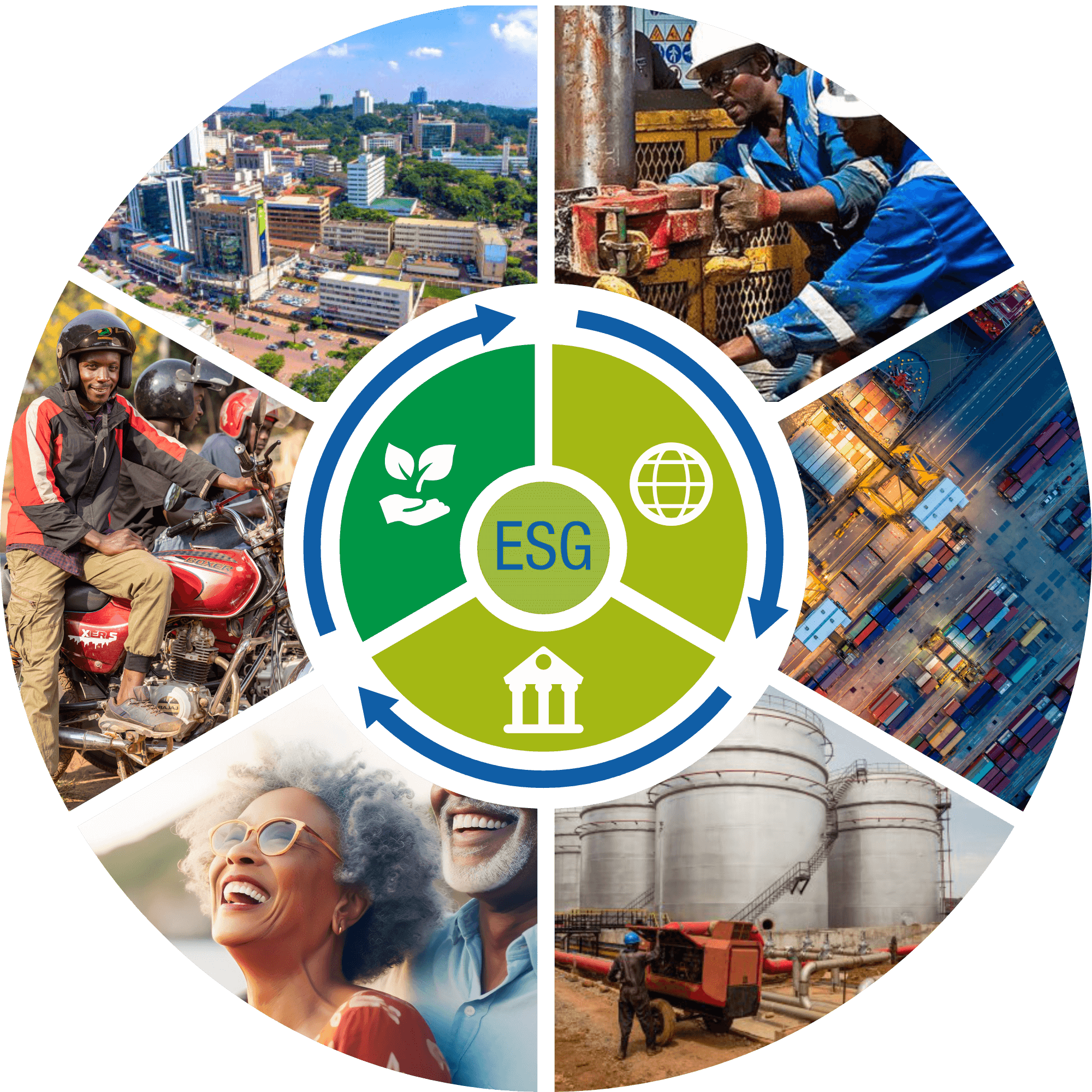OUR REPORT OVERVIEW
INTRODUCTION
With a steadfast focus on value creation and preservation, we are committed to mitigate any factors that could erode value, both in the short and long term. We wholeheartedly recognise the profound impact of our business activities on society and the environment for inclusive prosperity. Consequently, we embrace our opportunity and fiduciary duty to ensure a positive and transformative influence on all stakeholders. We passionately believe that fostering efficient and sustainable operations, coupled with our commitment as a responsible corporate citizen, are prerequisites for generating enduring value over time. Embracing the principle of integrated thinking, we seamlessly strive to infuse it into our business practices and reporting standards. Hence, we actively shoulder the responsibility of consciously advancing integrating environmental, social, and governance (ESG) factors into our strategic decision-making, investment choices, and operational processes.
This report has been aligned to the Integrated Reporting (IR) Framework. It is also in compliance with Uganda's National Social Security Fund Amendment Act 2022, which was gazetted into law on 7 January 2022. “National Social Security Fund,” “NSSF” and “The Fund” are interchangeably used but refer to the same entity. We are proud to present our digital integrated report to you for the year ending 30 June 2023.


Purpose, Scope, and Boundary of our Report
Our integrated report is a demonstration of our value creation story and our commitment to foster shared prosperity for our members, the economy, and society at large.
It aims to provide a balanced and accurate reflection of our strategy, performance, risks, opportunities, trade-offs, and future outlook on material financial, economic, social, and governance issues.
This report primarily addresses how we create value over the short, medium, and long term, with a demonstration of the effects on the six capitals providing our stakeholders with a transparent and holistic view of our business operations.
This integrated report covers the performance of the National Social Security Fund (NSSF), both from a financial and non-financial perspective, for the financial year ended 30 June 2023.
Materiality
This report discloses information about matters that substantively affect our ability to create value over the short, medium, and long term. Short-term refers to 12-18 months, medium-term 18 months to 5 years, long-term is 5 years and beyond. We consider the concept of double materiality, which encompasses both internal and external factors that shape our value creation journey.
Within this framework, we acknowledge two dimensions of materiality as follows:
INTERNAL
Internal materiality pertains to issues that substantively influence our internal operations, risk management, and financial performance
External
External materiality encompasses factors that have significant implications for our external stakeholders and the broader environment, such as social and environmental risks, regulatory changes, and emerging trends

This ensures that our stakeholders gain insights into the material factors driving our immediate operational success, as well as our strategic initiatives and investments that shape our medium and long-term resilience, growth, and positive societal and environmental impacts. Our materiality determination process is continually assessed and approved by our Board to ensure relevance of our strategy.
Materiality determination process
Forward-Looking Statements
This report may contain forward-looking statements with respect to the Fund’s future performance and prospects. While these statements represent our judgment and future expectations at the time of preparing this report, several emerging risks, uncertainties, and other key factors could cause actual results to differ materially from our expectations. These include factors that could adversely affect our business and financial performance.
Outlook
Outlook information comprises challenges, opportunities, and disruptive factors we have identified that have the potential to affect the achievement of our strategic objectives and our mitigating response as well as opportunities identified. Outlook information can be found throughout this report; however, most of this information can be found in our outlook section.
SEE OUTLOOK
Internal Controls and Assurance
The Internal Audit function supports the integrity and transparency underlying integrated reporting, by providing an independent reassurance on business sustainability. Internal Audit’s role is achieved through providing assurance on financial, as well as non-financial reporting, governance, risk management, and control processes supporting the main objectives of integrated reporting.
The Internal Audit function provides independent and objective assurance of the design and operating effectiveness of the framework of risk management, controls, and governance processes, focusing on the areas of greatest risk.
External Audit
The external auditors undertake audits of the Annual Financial Statements. The Auditor General appointed PwC Uganda to conduct an annual audit of the National Social Security Fund for the year ending 30 June 2023. The auditors issued an unqualified audit opinion, in accordance with International Financial Reporting Standards and in the manner required by the Uganda Retirement Benefits Regulatory Authority Act and the NSSF Act, a testament of the Fund’s healthy financial state.
Combined Assurance
Accountability is clear within the three lines of defence model, with assurance providers working together to provide coordinated assurance. Enterprise Risk Management, Legal, and Internal Audit work collaboratively to provide combined assurance on risk, compliance, and internal controls. Combined assurance ensures that there is comprehensiveness in terms of coverage and avoidance of duplication. Assurance is provided on financial and non-financial information.
Key components of the integrated report, such as governance, risk management and controls are assured.

